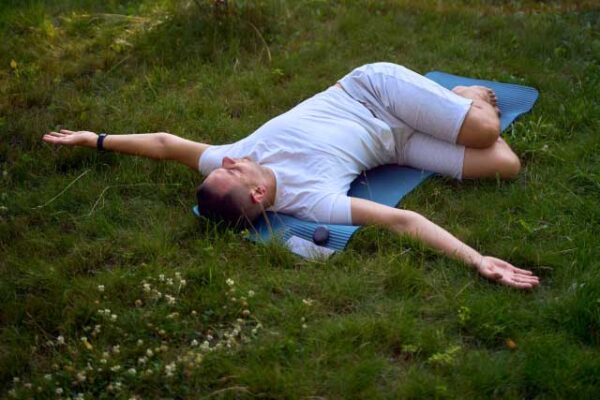Somatic Yoga for Body and Mind
Somatic yoga is capturing the attention of practitioners worldwide. This mind-body practice, rooted in the principles of somatics, offers an opportunity for focusing on greater self-awareness, physical well-being, and emotional integration. By shifting the focus from external form to internal sensations, somatic yoga offers practitioners a way of cultivating a deeper understanding of their own embodied experience, ultimately empowering them to move, heal, and grow in a more intuitive and empowered manner.

Somatics – Body, Mind, Emotions
Somatic yoga draws its foundations from the field of somatics, a discipline that emphasizes the interconnectedness of the body, mind, and emotions. Pioneered by visionaries like Thomas Hanna and Moshe Feldenkrais, somatics encourages individuals to explore their unique physical and energetic patterns, recognizing the profound impact that habitual movements, emotional states, and life experiences can have on the body.
At the core of somatics is the belief that true transformation and healing can only occur when we deeply connect with our embodied self. By tuning into the subtle sensations and movements within the body, practitioners can uncover and release long-held tensions, patterns, and even traumatic imprints, ultimately facilitating a greater sense of ease, flexibility, and overall well-being.
Somatic Yoga – What is It?
Somatic yoga embraces a set of guiding principles that set it apart from more traditional yoga styles. Somatic yoga emphasizes the cultivation of interoceptive awareness – the ability to sense and perceive the internal states of the body. Rather than focusing solely on the external alignment of poses, practitioners are invited to tune into the sensations, energetic flows, and subtle shifts occurring within as they move.
In contrast to the dynamic and often vigorous nature of many modern yoga practices, somatic yoga encourages slow, gentle, and exploratory movements. This approach allows practitioners to deeply feel and integrate each movement, fostering a greater sense of embodiment and self-awareness.
Somatic yoga is also a highly mindful yoga practice, with a strong emphasis on present-moment awareness. Practitioners are guided to stay attuned to their inner experience, noticing the nuances of their breath, muscle tone, and emotional states as they unfold and acknowledging the uniqueness of each individual’s body and experience. Rather than prescribing a one-size-fits-all approach, the practice encourages practitioners to explore and honor their own personal comfort zones, limitations, and areas of potential growth.
At the heart of somatic yoga lies the fundamental principle of mind-body integration. By cultivating a deep connection between the physical, mental, and emotional aspects of the self, practitioners can experience a profound sense of wholeness and embodied empowerment.
Somatic Yoga & Mindful Movement
Somatic yoga’s focus on gentle, mindful movements can help to increase joint mobility, muscle flexibility, and overall physical strength. By addressing underlying patterns of tension and restriction, practitioners can experience greater ease and fluidity in their movements.
Many individuals struggling with chronic pain, such as headaches, frozen shoulders, or breathing difficulties, have found relief through the practice of somatic yoga. By addressing the root causes of these issues, the practice can help to alleviate discomfort and restore balance to the body. At the same time, the mindful, interoceptive focus of somatic yoga helps practitioners develop a heightened sense of body awareness. This increased sensitivity to one’s own physical sensations can facilitate a deeper understanding of one’s needs, limitations, and areas for growth.
Emotional Regulation and Trauma Healing
Somatic yoga’s emphasis on the mind-body connection can be particularly beneficial for individuals dealing with emotional challenges or trauma. By addressing the physical manifestations of emotional experiences, the practice can support the release of deeply held tensions and the integration of past wounds. The calming, grounding nature of somatic yoga can also be a powerful tool for managing stress and cultivating a greater sense of inner peace. By slowing down the pace of movement and focusing on the breath, practitioners can access a state of relaxation and heightened self-awareness.
The Evolution of Somatic Yoga
Somatic yoga has its roots in the broader field of somatics, which has been influenced by various Eastern and Western movement practices, including yoga, tai chi, and the Feldenkrais Method. Over the years, somatic yoga has evolved and diversified, with different practitioners and schools developing their own unique approaches and methodologies.
One notable figure in the somatic yoga landscape is Eleanor Criswell, a former psychology professor and the founder of Somatic Yoga. Criswell’s approach emphasizes the importance of slow, mindful transitions between poses, allowing practitioners to cultivate a deeper awareness of their bodily sensations and patterns.
Another influential figure is Bonnie Bainbridge Cohen, the founder of Body-Mind Centering, who has applied her somatic principles to the practice of yoga. Bainbridge Cohen’s work has inspired many yoga teachers to incorporate somatic elements into their classes, fostering a more intuitive and embodied experience for their students.
Integrating Somatic Yoga into Daily Life
By incorporating the principles and practices of this mind-body discipline into daily life, individuals can cultivate a greater sense of embodied awareness, emotional resilience, and overall well-being. Simple somatic exercises, such as conscious breathing, gentle self-exploration, and mindful movement, can be easily integrated into your daily routine. These practices can help individuals navigate the stresses and challenges of everyday life with more clarity, presence, and self-compassion.
Moreover, the skills developed through somatic yoga, such as the ability to tune into bodily sensations, recognize emotional patterns, and respond with greater self-awareness, can be applied to various aspects of life, from relationships and work to personal growth and decision-making.
Whether seeking to alleviate physical discomfort, manage emotional challenges, or simply deepen their connection to the present moment, individuals who embrace the somatic yoga path can embark on a truly transformative journey of self-discovery and holistic well-being.

